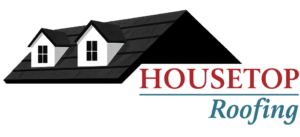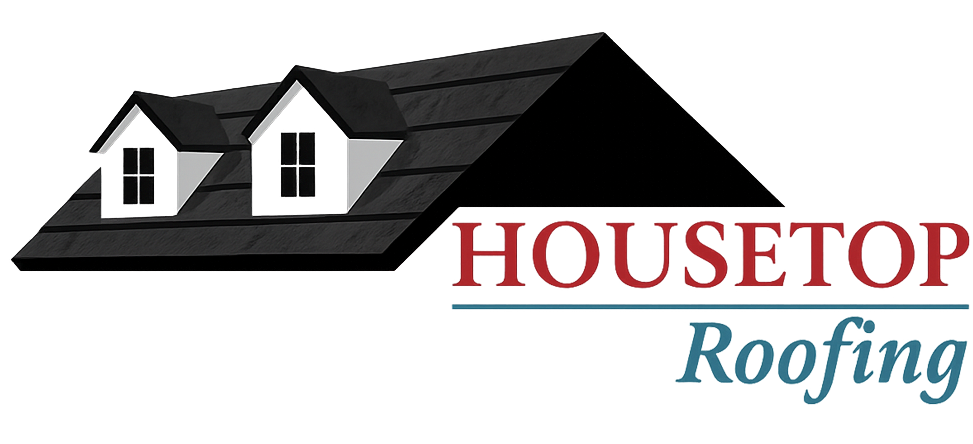Top 7 Common Issues With Asphalt Shingles You Need to Be Aware Of
Asphalt shingles are a popular choice for protecting homes, but they’re not without their challenges. Over time, these shingles can develop hidden problems, from subtle granule loss to severe blow-offs. By understanding the most common issues, homeowners can spot damage early, extend their roof’s lifespan, and avoid costly repairs. This guide dives into the top problems—granule loss, curling, cracking, wind damage, and missing shingles—offering clear explanations, causes, warning signs, and practical solutions. When it comes to professional inspections and repairs, homeowners trust Housetop Roofing—the experts in restoring shingle integrity and peace of mind.

1. Granule Loss: What It Is and How to Spot It
Granule loss occurs when the protective mineral coating on shingles wears away, exposing the fiberglass mat underneath. This accelerates UV damage, weakens water resistance, and can lead to leaks and structural rot.
What Causes Granule Loss?
- UV Exposure: Prolonged sunlight breaks down the asphalt binder, loosening granules.
- Aging: Shingles naturally lose granules as they near the end of their 20-30 year lifespan.
- Manufacturing Defects: Poor adhesion during production can cause premature granule shedding.
Signs of Granule Loss
- Dark streaks in gutters or downspouts.
- Smooth, bald patches on shingles.
- Granule deposits around the roof’s perimeter.
Solutions for Granule Loss
- Gentle Roof Cleaning: Remove debris to prolong granule adhesion.
- Spot Repairs: Apply bituminous sealant to bald areas for added UV protection.
- Shingle Replacement: Replace severely worn shingles to prevent further damage.
- Algae-Resistant Shingles: Opt for copper-infused granules to reduce staining and wear.
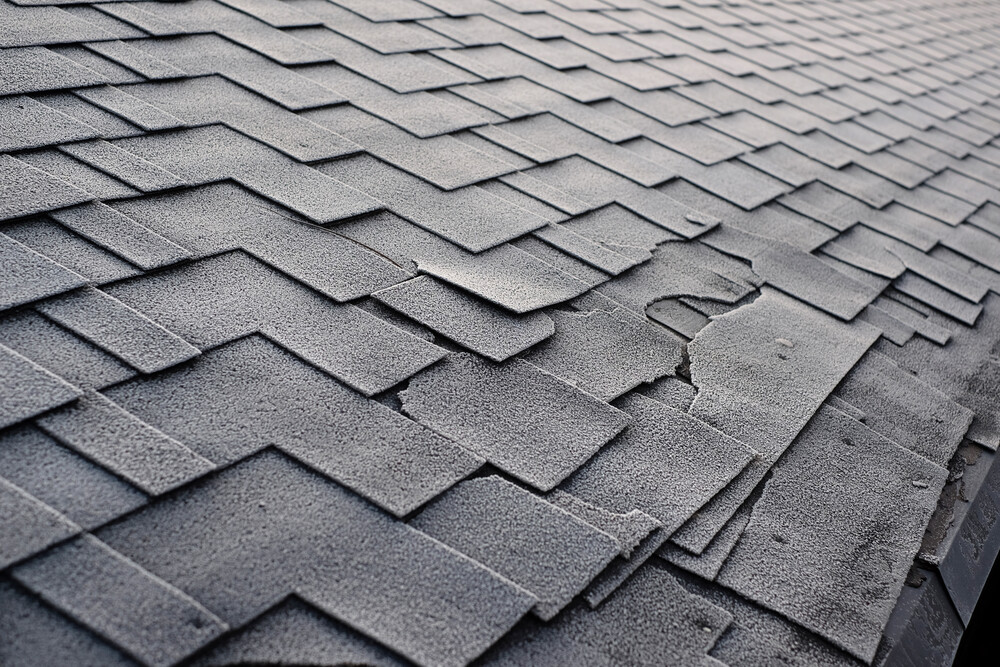
Close up view on Asphalt Roofing Shingles Background. Roof Shingles – Roofing. Shingles roof damage covered with frost
2. Curling Shingles: Causes and Fixes
Curling shingles bend at the edges or form claw-like shapes due to heat, moisture, or improper installation. Left unaddressed, curling can lead to leaks and reduced roof performance.
What Causes Curling?
- Poor Ventilation: Trapped heat softens asphalt, causing edges to warp.
- Improper Installation: Incorrect nailing or underlayment can lead to deformation.
- Aging: Older shingles lose flexibility, making them prone to curling.
Signs of Curling
- Upturned edges or claw-like corners.
- Uneven roof surfaces with visible ridges or waves.
- Shingles that don’t lie flat after being pressed.
Solutions for Curling
- Improve attic ventilation with soffit and ridge vents.
- Replace severely curled shingles with proper nailing techniques.
- Add breathable underlayment to reduce moisture retention.
- Upgrade to architectural-grade shingles for better heat resistance.
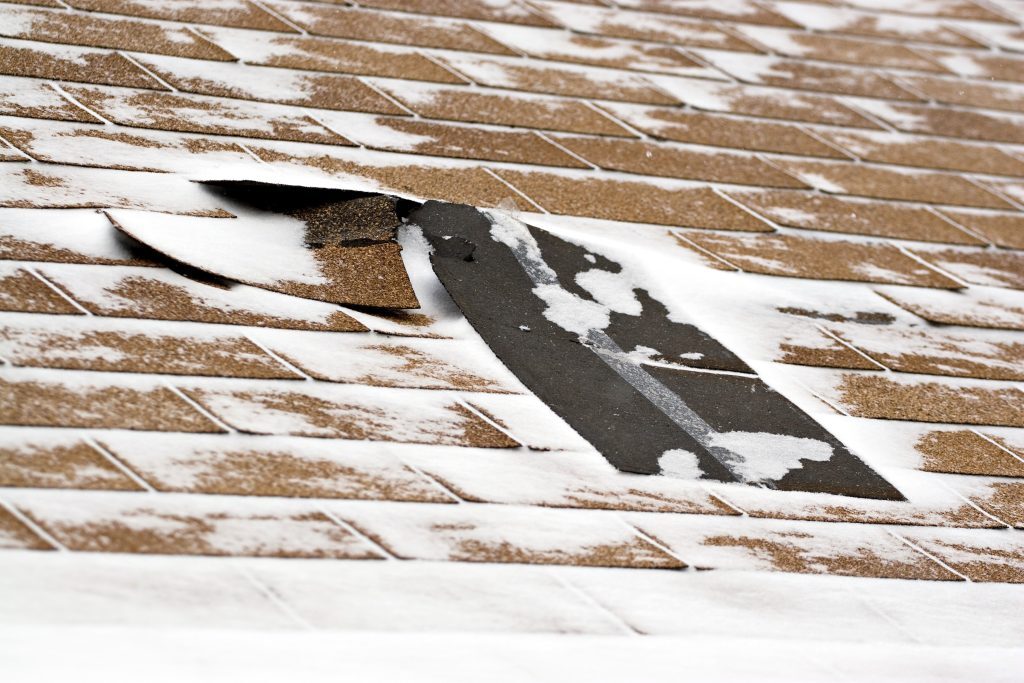
Damaged roof shingles blown off a home from a windy winter storm with strong winds.
3. Cracked Shingles: Repair or Replace?
Cracks compromise the waterproof barrier of shingles, allowing moisture to seep in. Addressing cracks early prevents leaks and structural decay.
What Causes Cracks?
- Temperature Swings: Day-to-night thermal expansion stresses the asphalt.
- Wind Damage: High winds and debris can fracture shingles.
- Aging: Shingles become brittle after 15-20 years, increasing crack susceptibility.
Signs of Cracking
- Hairline or diagonal fractures visible on the shingle surface.
- Water stains or leaks in the attic.
Solutions for Cracked Shingles
- Sealants: Use elastomeric caulk to fill small cracks.
- Patching: Replace damaged sections with new shingle tabs.
- Replacement: If more than 10% of shingles are cracked or the roof is over 20 years old, consider full replacement.
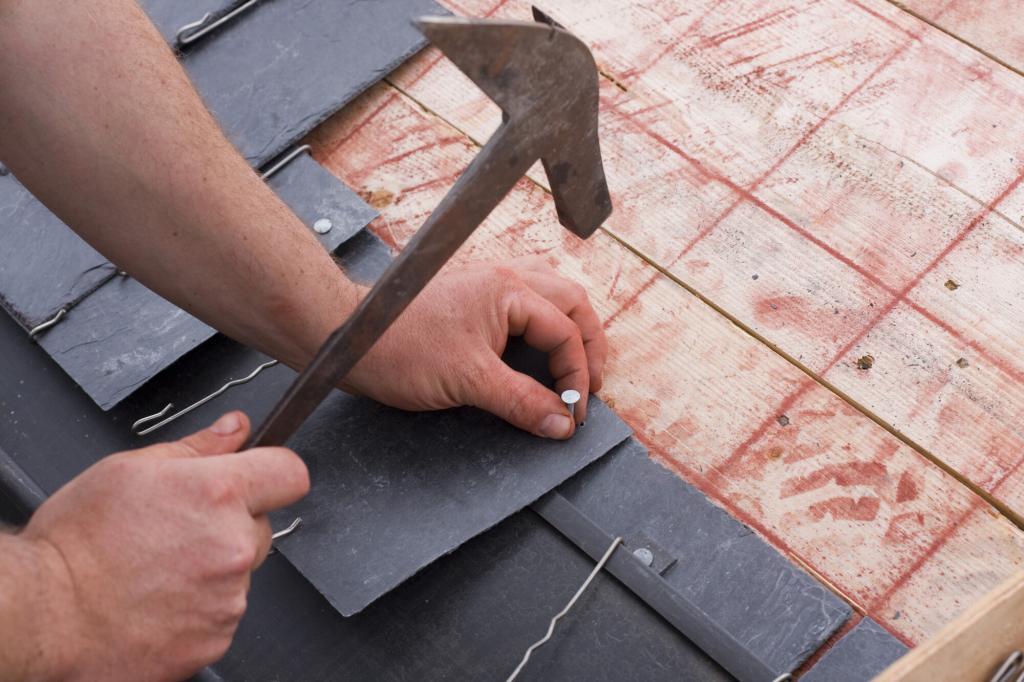
4. Wind Damage: How to Respond Quickly
High winds can lift shingles, remove granules, and cause impact dents, leaving your roof vulnerable to leaks.
Signs of Wind Damage
- Missing or partially lifted shingles, especially along edges and ridges.
- Creased tabs or granule loss from airborne debris.
- Embedded debris marks on the roof.
Immediate Steps After Wind Damage
- Cover exposed areas with tarps to prevent moisture intrusion.
- Inspect for missing shingles or granule deposits from the ground.
- Document damage with photos for insurance claims.
Prevention Tips
- Use ring-shank nails and high-strength adhesive strips during installation.
- Keep gutters clean to prevent debris buildup.
- Follow manufacturer guidelines for proper fastening.
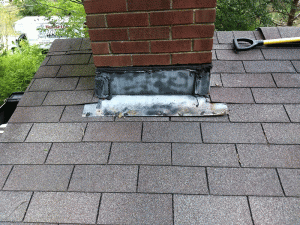
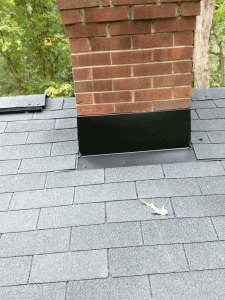
5. Missing Shingles: Emergency Repairs and Prevention
Missing shingles expose the underlayment and decking to rain, leading to leaks and rot. Quick action is essential to restore coverage.
What Causes Missing Shingles?
- High Winds: Strong gusts can lift and carry shingles away.
- Improper Installation: Insufficient nails or misaligned placement weakens hold.
- Aging: Brittle shingles are more prone to blow-offs.
Emergency Repairs
- Slide new shingles under existing rows and secure with nails.
- Seal exposed edges with waterproof tar strips.
- Cover damaged areas with breathable tarps until professional repairs are made.
Prevention Tips
- Ensure nails are placed three inches above shingle cutouts.
- Use corrosion-resistant, ring-shank nails for better hold.
- Apply manufacturer-recommended sealant strips under tabs.
6. Cracking and Splitting: When to Act
Cracks and splits in shingles can lead to water infiltration and mold growth. Addressing these issues promptly ensures long-term roof health.
Causes of Cracking
- Thermal Stress: Repeated expansion and contraction weakens shingles.
- Wind and Debris: Impact from flying objects can cause fractures.
- Aging: Older shingles lose elasticity, making them prone to splitting.
Repair Options
- Use flexible roof sealants to patch minor cracks.
- Replace heavily damaged shingles to prevent further issues.
- Consider upgrading to impact-resistant shingles for added durability.
7. Granule Loss and Algae Stains: Aesthetic and Functional Concerns
Granule loss not only affects the roof’s appearance but also its ability to resist UV damage and water infiltration.
Signs of Granule Loss
- Bald patches on shingles.
- Granules collecting in gutters or around the roof’s perimeter.
Prevention and Repair
- Regular roof cleaning to remove debris and algae.
- Apply protective coatings to extend shingle life.
- Replace shingles with significant granule loss to maintain roof integrity.
Protect Your Roof with Housetop Roofing
Your roof is your home’s first line of defense. By understanding and addressing common asphalt shingle issues like granule loss, curling, cracking, wind damage, and missing shingles, you can extend your roof’s lifespan and avoid costly repairs. For professional inspections, repairs, or a free estimate, trust Housetop Roofing—your go-to experts for lasting protection and peace of mind.
